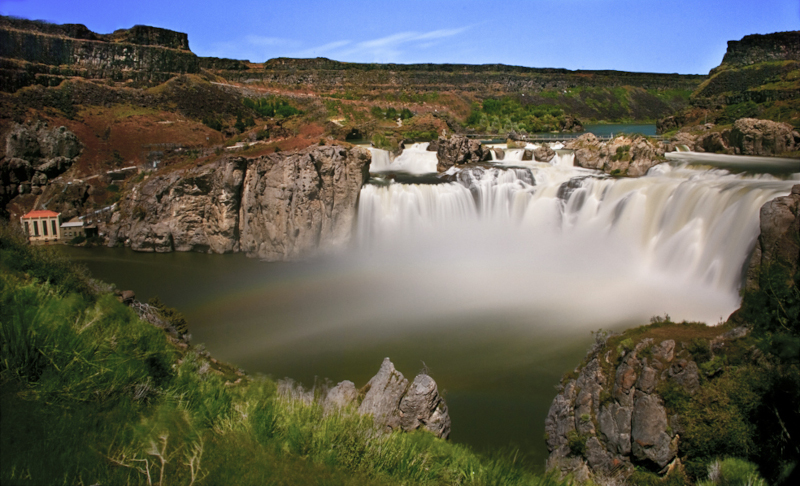
Photographer: Charles Knowles
CC License: https://bit.ly/3e0c3dq
Shoshone Falls ranks as a beautiful waterfall situated on the Snake River, in southern Idaho, United States. This wonder of geology also forms an excellent example of a block style waterfall.
Due to its volume, it often gets referred to as the Niagara of the West. Uniquely, the shape of the waterfall also changes depending upon the flow volume. These forms range from a single broad wall of water to multiple small flows scattered across the cliff face.
The volume of Shoshone Falls greatly reduces in the summer and fall. At these times, the waterfall gets utilized as a source of both hydroelectricity and irrigation.
Photographer: Karthikc123
CC License: https://bit.ly/3xw2PgK
Shoshone Falls Origins and Characteristics
Shoshone Falls formed during the last Ice Age. At that time, the Bonneville Flood formed the river, along with multiple nearby valleys.
Incoming settlers named the waterfall in honor of the indigenous Shoshone Indian Tribe, who originally inhabited the immediate area.
The crest of the cascade sits at an elevation of approximately 3,263 ft (995 m) above sea level. It forms a single drop waterfall, with a plunge of roughly 212 ft (65 m).
Its width varies by season but averages nearly 925ft (282 m). The average flow rate of Shoshone Falls appears to be about 3,200 cf/s (91 cm/s).
Photographer: Frank Schulenburg
CC License: https://bit.ly/2TSeVST
Shoshone Falls Ecological Importance
Shoshone Falls is an important component of the ecology of the region. It forms a natural division between the upper and the lower rivers.
Before the construction of the hydroelectric dam, enormous quantities of salmon and sturgeon once swam to Shoshone Falls. These were a primary food source for the indigenous peoples of the region.
The upper portion of the river is home to numerous species of trout. Because of the natural division formed by the Falls, 65% of the fish species in the river are present in only one section or the other.
Related Articles: Yosemite Falls, Ebor Falls, Linville Falls

